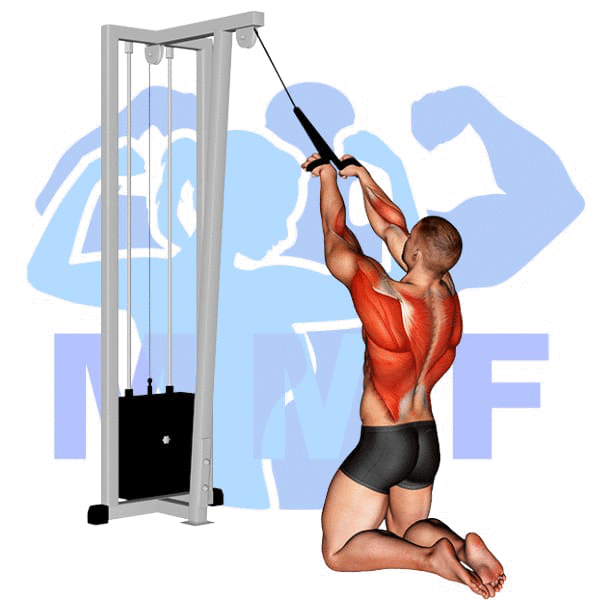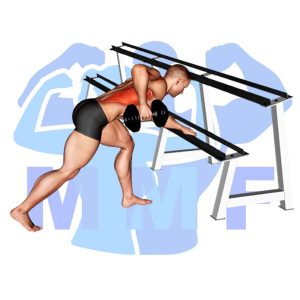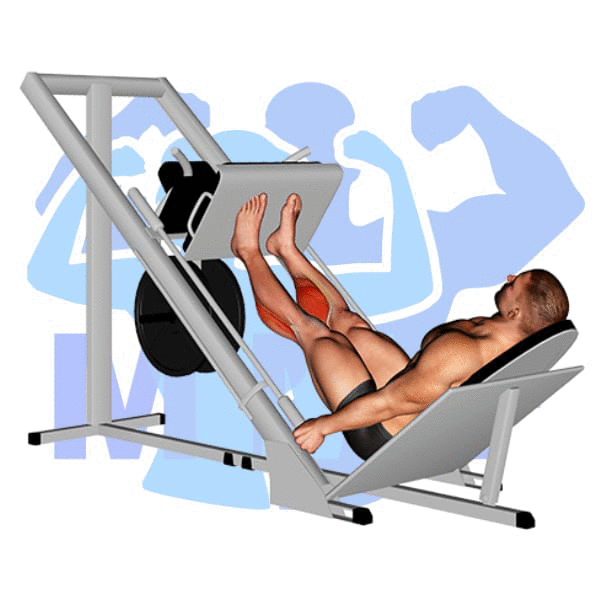Are you struggling to target your upper back and shoulders during your workout sessions? Does your poor posture at work or while using electronic devices cause you pain in your neck and shoulders? We know how you feel. These are common problems caused by our daily lives, but there is a solution. The cable rope face pull is an effective exercise that targets the upper back muscles, shoulders, and neck, making it an ideal exercise for those who want to correct their posture and improve their overall upper body strength. In this post, we will guide you through the correct form and technique for a cable rope face pull so that you can maximize the benefits and start feeling pain-free.
Cable Rope Face Pull Summary
- Primary Muscles: Deltoid – Posterior
- Secondary Muscles: Brachialis, Brachioradialis, Infraspinatus, Rhomboids, Teres Minor, Trapezius – Lower, and Trapezius – Middle
- Equipment: Cable Machine with Tricep Rope
- Mechanics Type: Compound
- Force: Pull
- Utility: Basic or Auxiliary

Cable Rope Face Pull Instructions
- Begin by setting up a rope handle on a high point cable pulley.
- Then, grab the rope with both hands arm stretched out straight.
- Next, pull the center of the rope to your face by pulling your elbows back.
- Take a slight pause with the rope in front of your face and then let the cable pull your arms back straight slowly.
- You are back at the starting position, repeat the pulls for a set.
Video Tutorial
Cable Rope Face Pull Muscles
Target (Agonist)
Synergists
- Brachialis
- Brachioradialis
- Infraspinatus
- Rhomboids
- Teres Minor
- Trapezius – Lower
- Trapezius – Middle
Dynamic Stabilizers
Stabilizers
Antagonist Stabilizers

Benefits of Cable Rope Face Pull
The cable rope face pull is a great exercise for strengthening the posterior deltoid muscle. This exercise helps to improve shoulder stability, strengthen the rotator cuff muscles, and reduce the risk of shoulder injuries. It can be used as part of a strength training program or for general fitness. The posterior deltoid muscle helps to control the movement of the shoulder joint and is important for maintaining posture and balance. Performing this exercise regularly will help to strengthen the posterior deltoid muscle, increase shoulder stability, and reduce the risk of shoulder injuries.
Tips for Performing Cable Rope Face Pull
If you’re looking to take your cable rope face pull to a new level, then you’re at the right place. Using these suggestions can allow you to take full advantage of this effective workout. You’ll be able to develop your upper back muscles, and minimize your chance of injury. Let’s get started and see what these tips can do for you.
- Keep your posture straight: Make sure to keep your shoulders back and your spine straight while doing this exercise, so you can engage the right muscles and get the most benefit out of it. This will help you get fit and avoid any discomfort or injury.
- Pull with your elbows: Focus on pulling the cable up with your elbows and keep your arms close to your face as you do this, so that you can properly target the muscles in your upper back and shoulders. This will help you build a stronger upper body and improve your overall fitness.
- Take it slow: It’s important to take your time and do the exercise slowly, so that you can really feel the muscles working. This will help you get fit and also make sure that you are doing the exercise correctly. Taking it slow is also an important safety tip that should not be overlooked!
Benefits and Tips Video
Frequent Mistakes To Avoid
When conducting cable rope face pull, avoiding common mistakes is key to achieving optimal results and avoiding injury. From improper form to not engaging your core, these mistakes can reduce the productiveness of the exercise and may even put you at risk for injury. However, take it easy, it’s not as challenging as it might seem. By knowing the errors to avoid and taking the appropriate actions, you can execute the exercise securely and successfully. Thus, it is now your turn to maximize your results from this exercise and enjoy the benefits of a successful workout.
- Not keeping a straight back: This mistake should be avoided as it can put strain on the spine, which can lead to injury and pain.
- Using too much weight: This can cause the person to lose form, leading to bad technique and incorrect muscles being used, resulting in inefficient exercise and possible injury.
- Pulling too quickly: This mistake should be avoided as it increases the risk of muscle or tendon strains and pulls. It also reduces the effectiveness of the exercise and can cause fatigue.
Find More Cable Exercises Here
Variations and Complementary Exercises
When you want to challenge yourself further, there are plenty of variations, complementary, and alternative exercises that work similar muscles as the Cable Rope Face Pull. Here are a few exercises to try out:
Dumbbell Bent Over Row

The Dumbbell Bent Over Row is an excellent alternative or complementary exercise to the Cable Rope Face Pull. This exercise requires you to hold a pair of dumbbells with an overhand grip and bend over until your torso is parallel to the floor. From this bent-over position, you then row the weights up towards your chest while keeping your core engaged and back straight. This exercise is great for working your lats, traps, rhomboids, and rear delts, making it a great complement to the Cable Rope Face Pull which primarily works your upper back and rear delts.
Dumbbell Palm Rotational Bent Over Row

The Dumbbell Palm Rotational Bent Over Row is a great complementary or alternative exercise to the Cable Rope Face Pull. This exercise focuses on the mid-back and the shoulders, and can help build strength, stability, and mobility in the upper body. It involves holding two dumbbells in a palms-in position and performing a rowing motion while keeping your core tight and your back straight. The rotation of the palms as you pull the weight up helps to add an extra challenge to the exercise, and also targets the muscles in the upper back and shoulder area. This exercise is perfect for anyone looking to gain strength and muscle in their upper body.
Dumbbell Supported One Arm Row

Dumbbell Supported One Arm Row is an excellent complementary or alternative exercise to the Cable Rope Face Pull. This exercise targets the same muscle groups as the Cable Rope Face Pull but in a slightly different way. It focuses on the lower and mid-back, as well as the shoulders, arms, and core muscles. To perform this exercise, you will need a flat bench and a single dumbbell. Start by laying on the bench with your feet firmly planted on the floor and your left arm extended along the bench. Take hold of the dumbbell in your right hand and row it up towards your chest. Slowly lower back down to the starting position and repeat for desired reps before switching sides.
Check Out These Top Cable Exercises
Incline Dumbbell Rear Deltoid Row

Incline Dumbbell Rear Deltoid Row is a great complementary or alternative exercise for the Cable Rope Face Pull. This exercise works the posterior deltoids, rhomboids, and trapezius muscles, which are all important for shoulder stability and posture. It can be done with a low incline bench and dumbbells, so it can be done at home or in the gym. The movement involves pulling the dumbbells back while keeping your elbows close to your sides and your upper arms parallel to the floor. This exercise is an effective way to target the rear deltoids without overworking the front deltoids like the Cable Rope Face Pull may do.
Barbell Bent Over Row

The Barbell Bent Over Row is a great complementary exercise to the Cable Rope Face Pull. This exercise works the back, core and upper body muscles and targets the same muscle groups as the Cable Rope Face Pull. The Barbell Bent Over Row is an effective alternative exercise for those looking to switch up their routine, as it engages the same muscles while adding a different type of resistance. It requires a bent over position with the hips and knees slightly bent, and the back flat. The barbell is held with an overhand grip and pulled up towards the chest until the elbows are at a 90-degree angle. The barbell is then lowered back to the starting position. It is important to keep the back flat and the core engaged throughout the exercise to ensure proper form and maximize results.
Barbell Rear Delt Raise

The Barbell Rear Delt Raise is a great alternative or complementary exercise to the Cable Rope Face Pull. It is an isolation exercise that targets the muscles of the posterior shoulder, specifically the posterior deltoids. This exercise can be performed with either a bent-over position, standing, or seated on a bench. The barbell should be held with an overhand grip slightly wider than shoulder-width apart and raised until the elbows are at shoulder height. The focus should be on keeping the elbows slightly bent and keeping the back straight throughout the movement. This exercise is great for building strength in the posterior shoulder muscles, as well as improving shoulder stability and posture.
Find More Back Exercises Here
Opposing Complementary Exercises
In order to maximize the benefits of Cable Rope Face Pull, it is important to complete complementary exercises that work the opposing muscle groups. To help you get the most out of your workout, the following exercises are recommended to target the opposing muscle groups.
Smith Machine Decline Bench Press

The Smith Machine Decline Bench Press is an effective exercise for targeting the lower chest, and it is complementary to the Cable Rope Face Pull because it works the opposing muscle group. This combination of exercises helps to promote balanced development of the muscles in the chest and upper back, as the decline bench press works the lower chest and the cable rope face pull works the upper back. This combination of exercises is especially beneficial to those looking to build a strong and powerful upper body.
Smith Machine Bench Press

The Smith Machine Bench Press is an excellent complementary exercise to the Cable Rope Face Pull, as they both work opposing muscle groups. The Smith Machine Bench Press targets the chest, shoulders, and triceps, while the Cable Rope Face Pull works the back and rear deltoids. By alternating between these two exercises, you can achieve a balanced workout that will help to increase strength and build muscle mass in both areas.
Smith Machine Decline Reverse Grip Press

The Smith Machine Decline Reverse Grip Press is a great complement to the Cable Rope Face Pull exercise, as it works the opposite muscle group. This exercise requires you to lie down on a decline bench and press the barbell up from the chest using a reverse grip. This motion will target the chest and triceps, while the Cable Rope Face Pull targets the back and shoulders. By performing both exercises, you will be able to effectively target both of these muscle groups and achieve a balanced workout.
Strengthen Your Shoulder and Improve Posture with Cable Rope Face Pulls!
Strengthening your shoulders is essential to maintaining proper posture and avoiding injuries. One exercise that can help you achieve this is the cable rope face pull. This exercise targets your rear shoulder muscles, upper back, and rotator cuff, which are all crucial for stabilizing your shoulders and improving your posture. By including cable rope face pulls in your workout routine, you will not only strengthen your shoulders, but also improve your overall upper body strength and stability.
References: Wikipedia | ExRx.net | PubMed.gov | Comprehensive List of Back Cable Exercises




